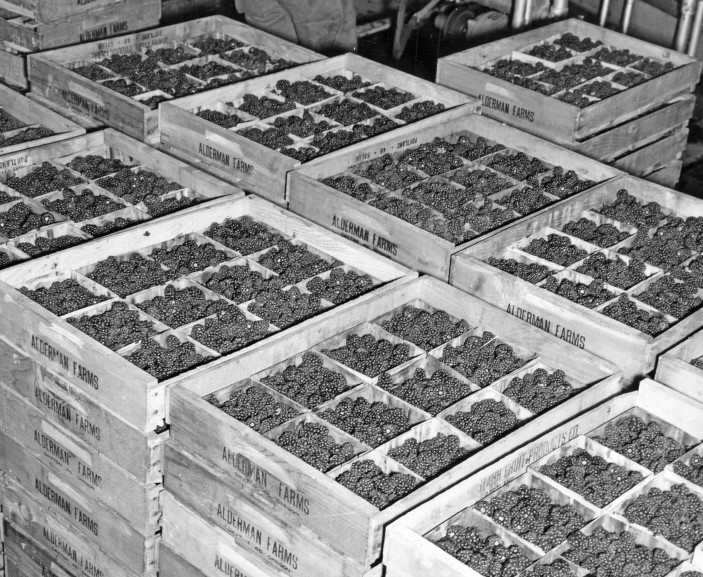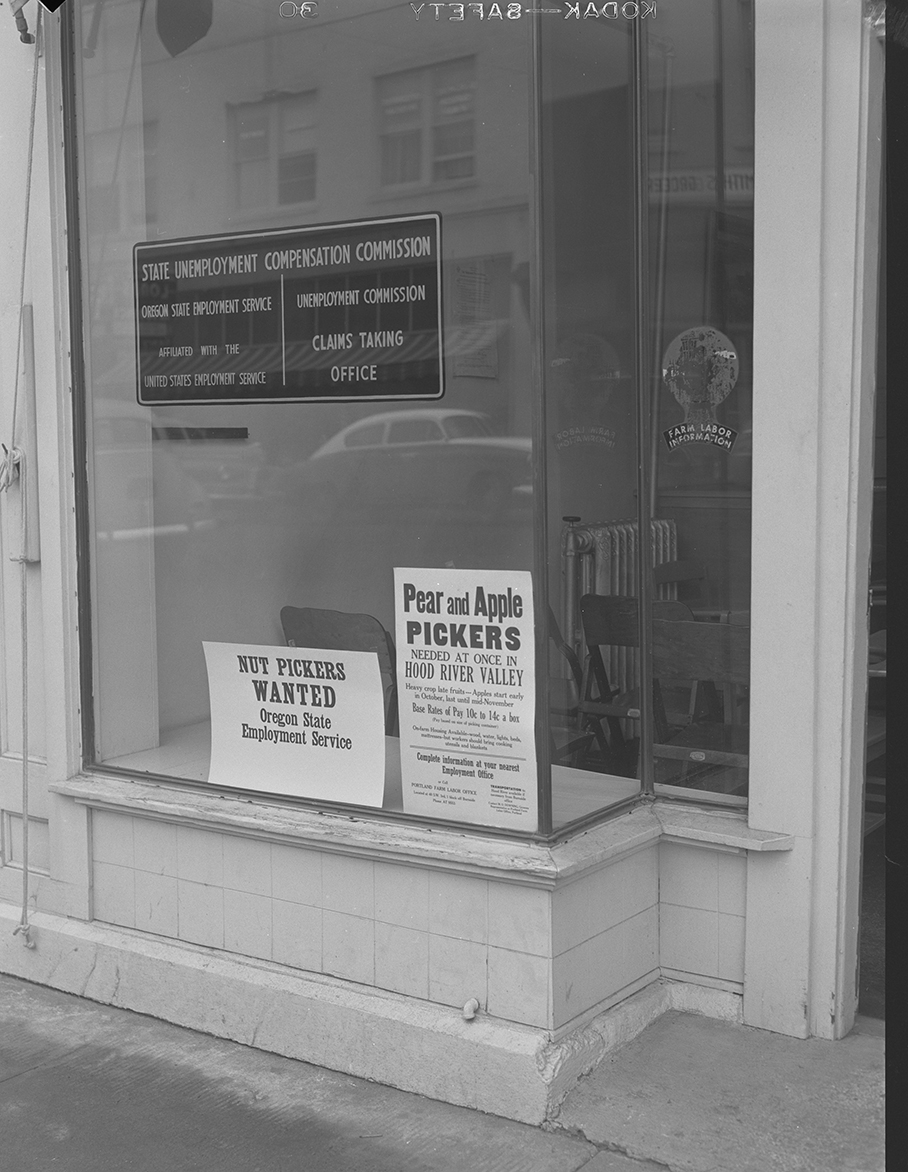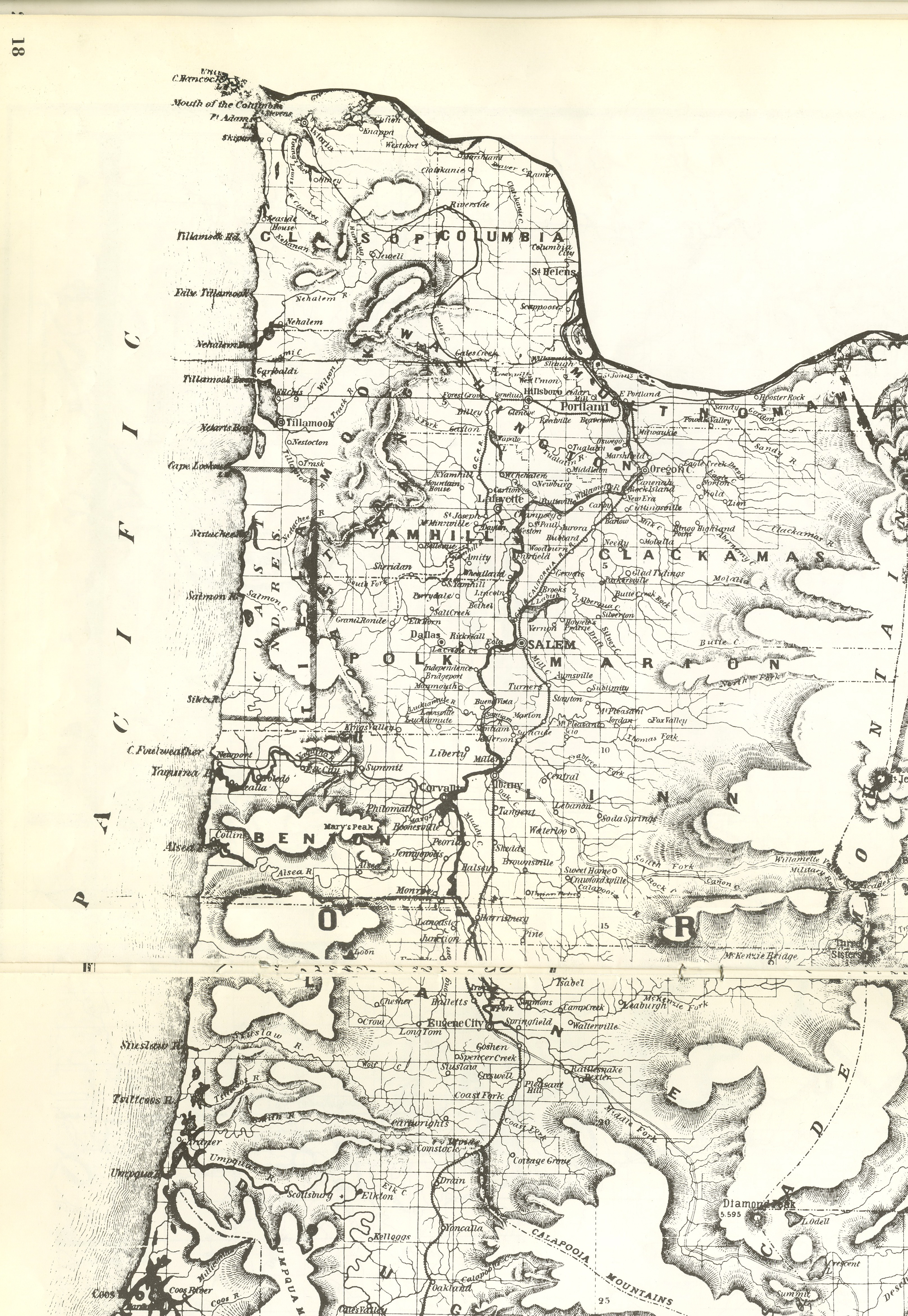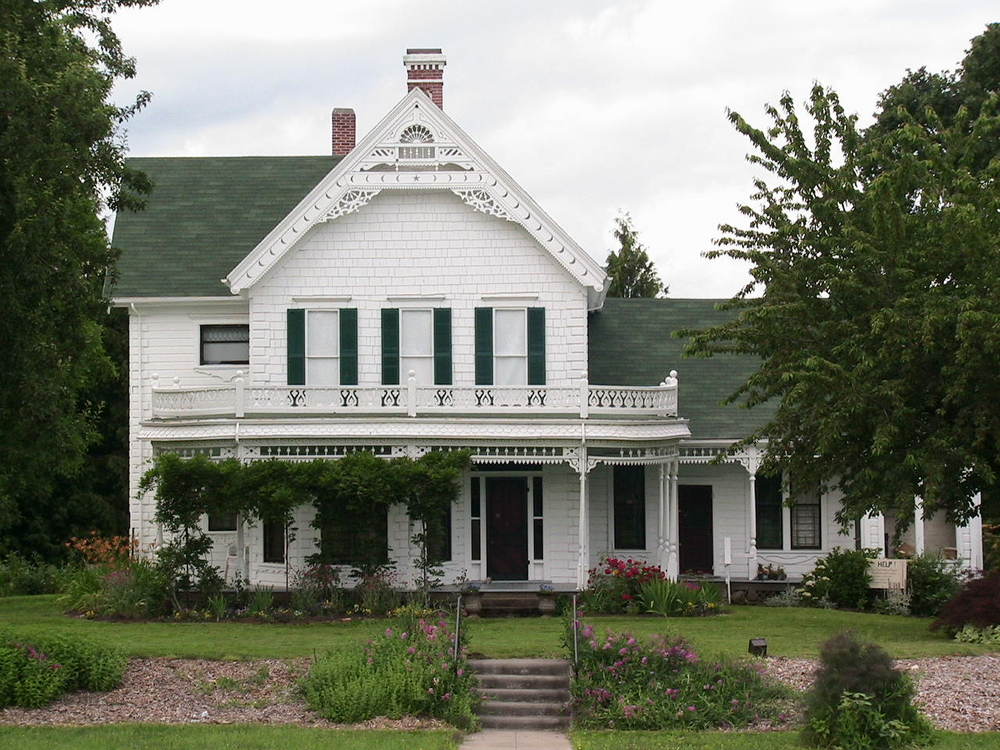As a twenty-four-year-old barrel maker from Michigan, Albert Alderman migrated to Oregon in 1846. A year later, he bought farmland five miles south of Dayton that would eventually become one of the nation’s largest row-crop farms. In the post-World War II era, Alderman Farms employed over 2,500 day laborers on a peak picking of pole beans. Most of the laborers were local teenagers; the farm was the summertime job for thousands of mid-Willamette Valley youth, particularly in Yamhill County.
Alderman’s son, Ennis (1870-1939), built the original 150-acre farm to 1,300 acres by the time it was passed to his son, Urie S. Alderman (1898-1964), upon Ennis’s death. Potatoes were the major crop in 1939; but wartime brought a demand for more crops, and Urie expanded into corn, beans, and strawberries. In 1946, the farm opened its own frozen-food plant. It was a community unto itself, with a service station, maintenance shops, sawmill, helicopter, cafeteria, and 750,000-gallon water tank.
At its peak in the late 1950s, when Alderman owned or leased over 3,000 acres of farmland, the farm set what was believed to be a record of picking 181 tons of pole beans in one day. Some sources said the farm produced 2 percent of the nation’s snap beans.
Pole beans were the most labor-intensive of Alderman’s crops, requiring crews to install and dismantle poles and wires and to irrigate and pick the crops. Alderman Farms hired about 750 pickers a season during World War II, but in the mid-1950s the bean crews grew to over 2,500. Buses brought pickers from as far away as Vancouver, Washington, and the present Lincoln City. The farm leased school buses, many from McMinnville bus operators Joe Dancer and Art Bennett, who also supervised the summer picking crews.
Extensive use of local youth (as opposed to migrants) in the fields was largely a creation of the wartime demand for food and labor. Oregon was a national leader in the use of youth employment during World War II. Summer harvest jobs for middle-class “townies” continued through the 1960s; but strawberry crews were reduced by child-labor laws in the 1960s, and farmers switched from labor-intensive pole beans to machine-harvested bush beans in the 1970s.
Alderman Farms also hired about 300 year-round workers, one of Yamhill County’s largest payrolls. In the 1940s, an annual barbecue for workers and friends drew about 4,000 people. Urie Alderman was considered a leader in the agricultural community. He was an early advocate of irrigation and the use of helicopter spraying, and he served on the State Board of Agriculture.
In 1959, Alderman Farms was designated an Oregon Century Farm & Ranch, in recognition of its hundred years of ownership and operation by the same family. Urie Alderman attracted several longtime assistants, including farm managers Howard Baker and Lloyd Zentner, business manager William Maxwell, and executive assistant Neva Crabtree, who ran the farm after Urie Alderman’s death from a heart attack in 1964. The frozen-food plant was sold shortly before Urie died, and the remainder of the farm was sold to Carlton Plants of Forest Grove in 1971. Some of the original buildings remain, and the farmland is planted with nursery crops.
-
![Flats of blackberries from Alderman Farms.]()
Alderman Farms, blackberries from.
Flats of blackberries from Alderman Farms. Photo Wanda Gifford, Oreg. State Univ. Archives, Gifford Photo Collec., P 218 SG 4 Series II
-
![]()
Ads for farm labor work, Dayton, 1950.
Oregon Historical Society Research Library, Org. lot 1284, 1775
Related Entries
-
![Hanley Farm]()
Hanley Farm
The Hanley Farm, situated along Jackson Creek about two miles northeast…
-
![Willamette Valley]()
Willamette Valley
The Willamette Valley, bounded on the west by the Coast Range and on th…
-
Zimmerman Heritage Farm
The Zimmerman Heritage Farm in Gresham consists of an 1874 farmhouse on…
Related Historical Records
Map This on the Oregon History WayFinder
The Oregon History Wayfinder is an interactive map that identifies significant places, people, and events in Oregon history.
Further Reading
McKay, Floyd J. “Green Beans, Green Cash: Alderman Farms’ Post-World War II Teenage Workforce.” Oregon Historical Quarterly 111:3 (Fall 2010), 372-388.
Schmitz, John. Last Harvest: The Story of Alderman Farms. Dayton, Ore.: Carlton Plants, 1996.





